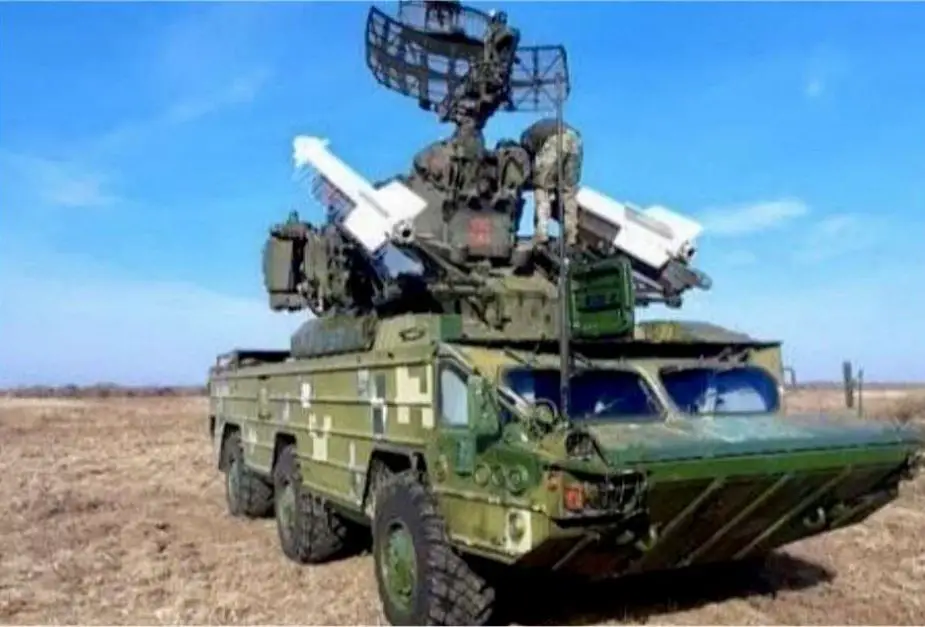Breaking news
Ukraine Modifies Soviet-Made SA-8 Air Defense Systems to Fire R-73 Missiles Following Delays in Military Aid.
To meet the need for more air defense systems in the face of numerous air attacks by Russian forces and delays in military aid from Europe and the United States, Ukrainian forces have reportedly adapted their 9K33M Osa (Sa-8B) Surface-to-Air Missile (SAM) systems to fire R-73 Air-to-Air Missiles (AAMs). This innovative modification, revealed through a picture shared on X Account OSINTtechnical on May 18, 2024, signifies a strategic enhancement of Ukraine's air defense capabilities.
Follow Army Recognition on Google News at this link

Ukrainian forces have reportedly modified several 9K33M Osa (Sa-8B) SAM systems to fire R-73 air-to-air missiles (AAMs) sourced from Ukrainian Air Force stockpiles.(Picture source: X Account OSINTtechnical)
The SA-8 Gecko , also known by its Russian designation 9K33 Osa, is a highly mobile, short-range, tactical surface-to-air missile (SAM) system developed by the Soviet Union. The system can engage aircraft, helicopters, and drones to provide air defense for ground forces. It is mounted on an amphibious, wheeled vehicle, making it highly maneuverable across various terrains.
Initially, it was equipped with 9M33 missiles housed in canisters, capable of engaging targets at altitudes up to 5 km and ranges up to 10 km. The system features an integrated radar for target acquisition and tracking, enabling autonomous operation without the need for external radar support. It can operate in various weather conditions and is equipped for rapid deployment and redeployment. Typically, the SA-8 is operated by a crew of four, including the driver, commander, gunner, and radar operator.
According to the image, each modified SA-8 Osa system now holds a pair of rail-launched R-73 missiles, replacing the standard canisterized 9M33 missiles. The R-73, known for its high maneuverability and infrared homing capabilities, is originally part of the Ukrainian Air Force's arsenal, typically deployed by fighter aircraft.
The R-73, known by its NATO reporting name AA-11 Archer, is a highly maneuverable, short-range, air-to-air missile developed by the Soviet Union and later Russia. It was introduced into service in the early 1980s and remains used today. The R-73 is designed to engage enemy aircraft in close combat and is renowned for its agility and advanced infrared homing capabilities.
Key characteristics of the R-73 include its ability to lock onto targets after launch (LOAL), allowing it to engage highly maneuverable and fast-moving aerial targets. The missile has a thrust-vectoring system, which enhances its maneuverability, making it highly effective in dogfights. It has an operational range of up to 30 kilometers and can engage targets at altitudes from 500 meters to 20 kilometers. The R-73 is equipped with a high-explosive fragmentation warhead and an infrared seeker, providing all-aspect targeting capability, allowing it to strike targets from any angle.
The R-73 can be mounted on various aircraft, including fighters and interceptors, and is compatible with helmet-mounted sight systems. This enables pilots to target enemy aircraft simply by looking at them, making the R-73 a formidable weapon in short-range aerial engagements.
The integration of R-73 AAMs into the Osa platforms is a strategic move that showcases the resourcefulness of Ukrainian forces. By utilizing existing military assets, they are bolstering their air defense systems. This adaptation could potentially enhance the effectiveness of Ukraine's short-range air defense, providing a versatile and mobile solution against aerial threats.


























